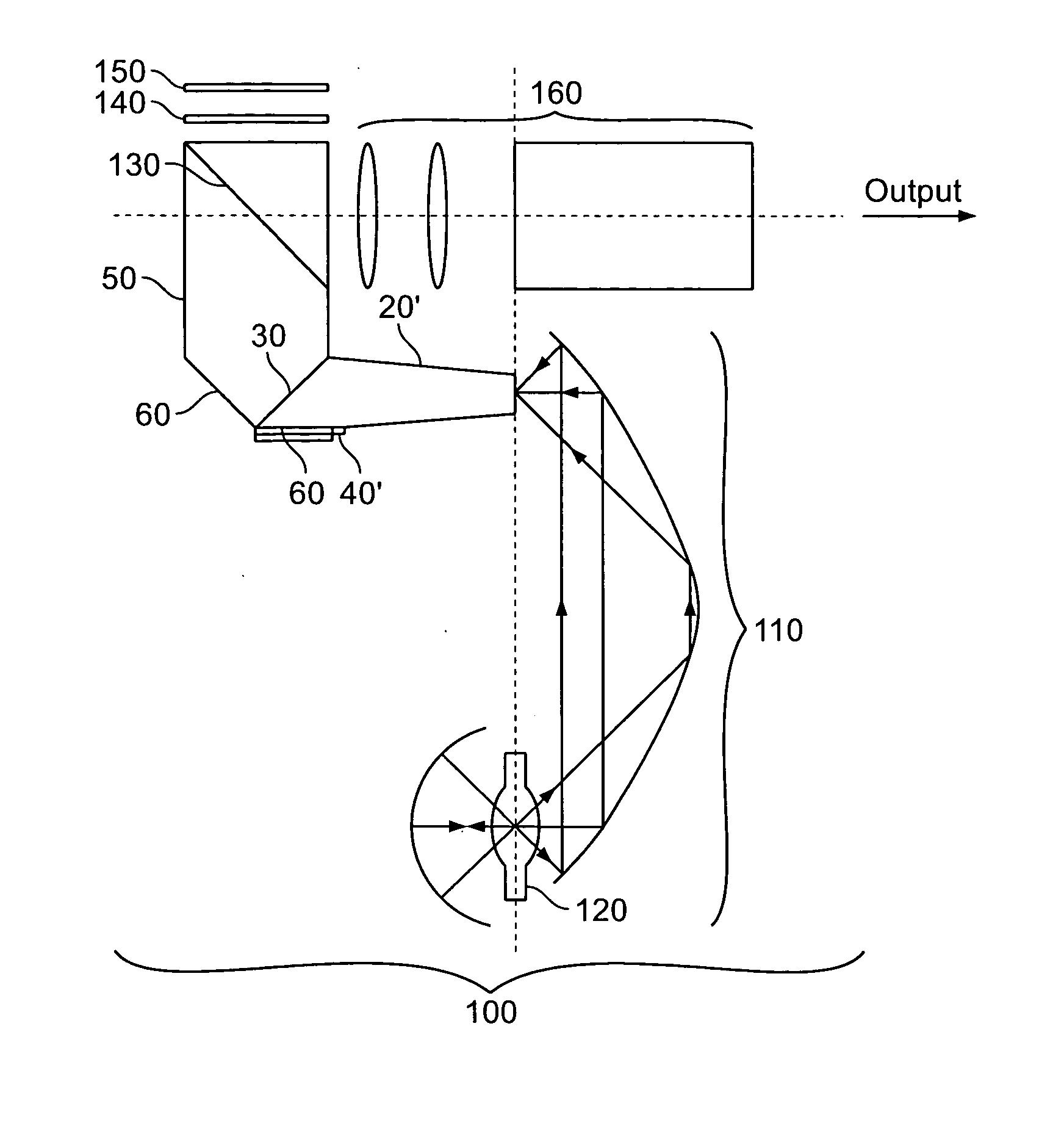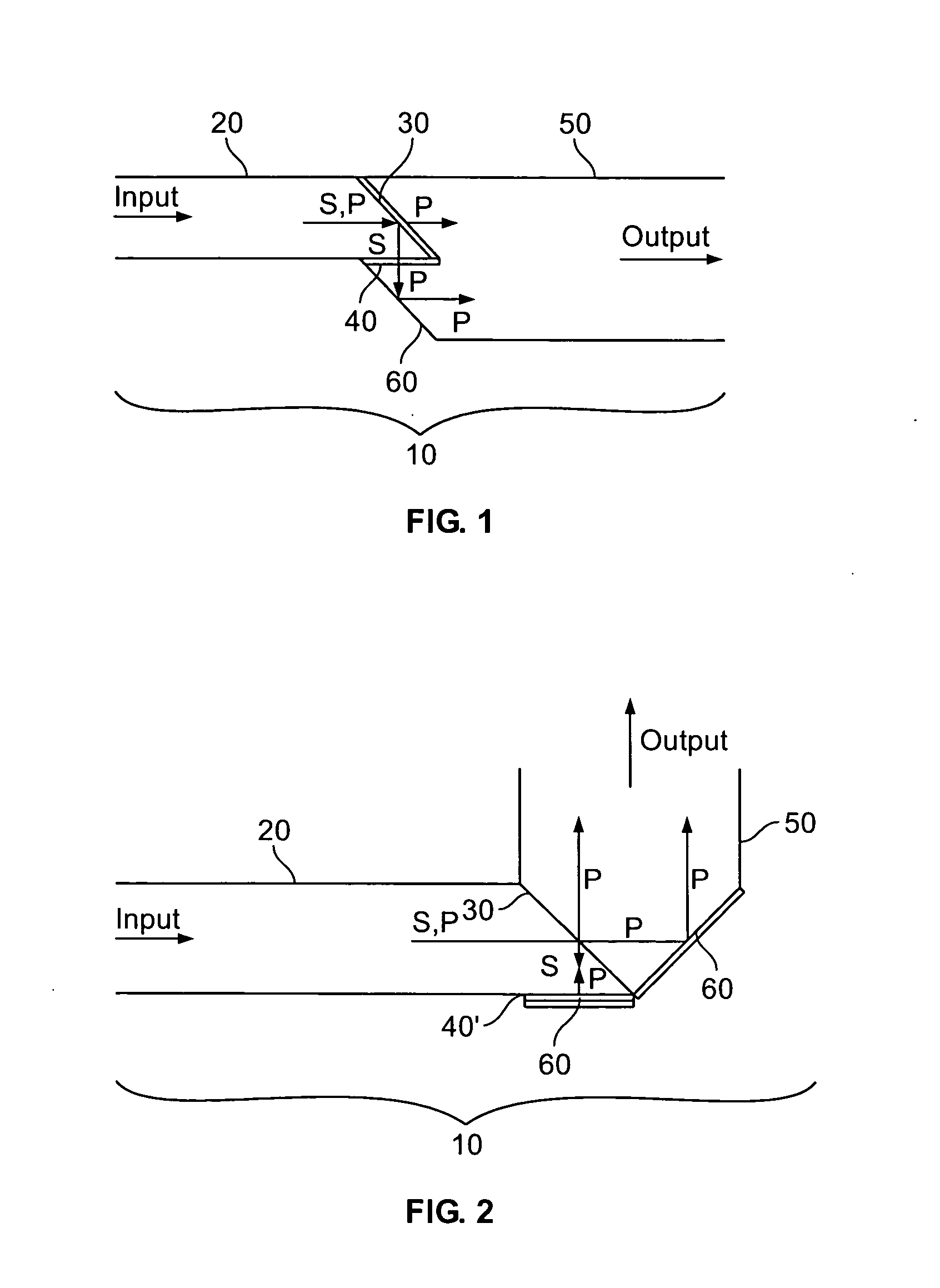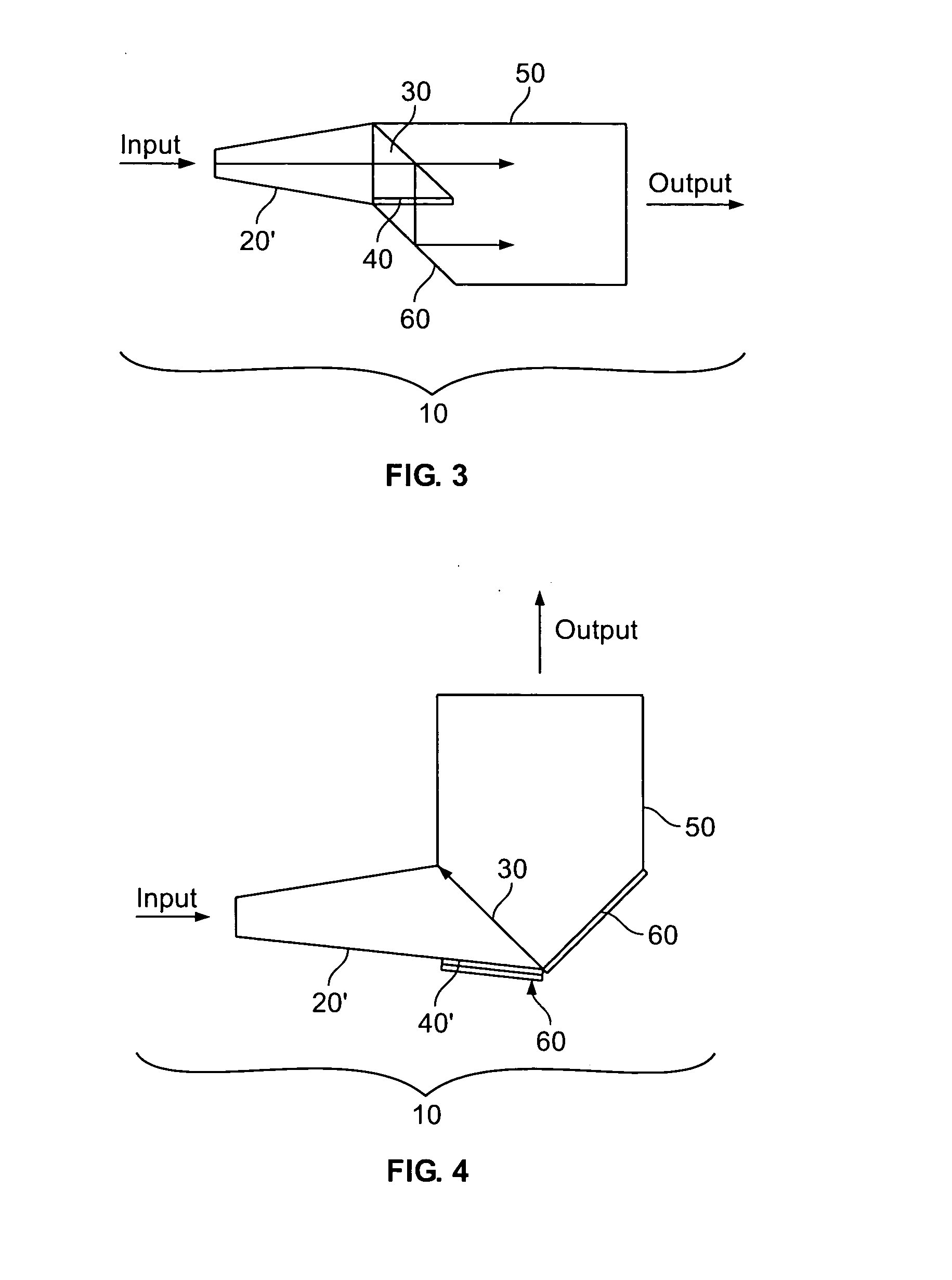Etendue efficient combination of multiple light sources
a multi-colored light source and efficient technology, applied in the field of multi-colored illumination, can solve the problems of compromising the projector's goal of producing a high intensity output, consuming a lot of light energy, and consuming a lot of energy, so as to achieve the effect of increasing etendue and not increasing etendu
- Summary
- Abstract
- Description
- Claims
- Application Information
AI Technical Summary
Benefits of technology
Problems solved by technology
Method used
Image
Examples
Embodiment Construction
[0030] As illustrated in FIGS. 1-4 and 6-10, in accordance with embodiments of the present invention, a compact waveguide polarization recovery system 10 comprises an input waveguide 20, a polarizing beam splitter (“PBS”) 30, a wave plate 40, which can be a half-wave plate, or a quarter-wave plate depending on the configuration, and an output waveguide 50. The waveguide polarization recovery system 10 generally further includes mirrors 60 as needed to direct the light stream between the input and output waveguides, 20 and 50. The following discussion first summarizes several possible configurations for the waveguide polarization recovery system 10 and then describes the individual elements in greater detail.
[0031]FIGS. 1, 3, and 6 illustrate one configuration of the waveguide polarization recovery system 10 in which the output light energy is substantially parallel with the input light energy. In this embodiment, the input waveguide 20 introduces unpolarized input light from a ligh...
PUM
 Login to View More
Login to View More Abstract
Description
Claims
Application Information
 Login to View More
Login to View More - R&D
- Intellectual Property
- Life Sciences
- Materials
- Tech Scout
- Unparalleled Data Quality
- Higher Quality Content
- 60% Fewer Hallucinations
Browse by: Latest US Patents, China's latest patents, Technical Efficacy Thesaurus, Application Domain, Technology Topic, Popular Technical Reports.
© 2025 PatSnap. All rights reserved.Legal|Privacy policy|Modern Slavery Act Transparency Statement|Sitemap|About US| Contact US: help@patsnap.com



